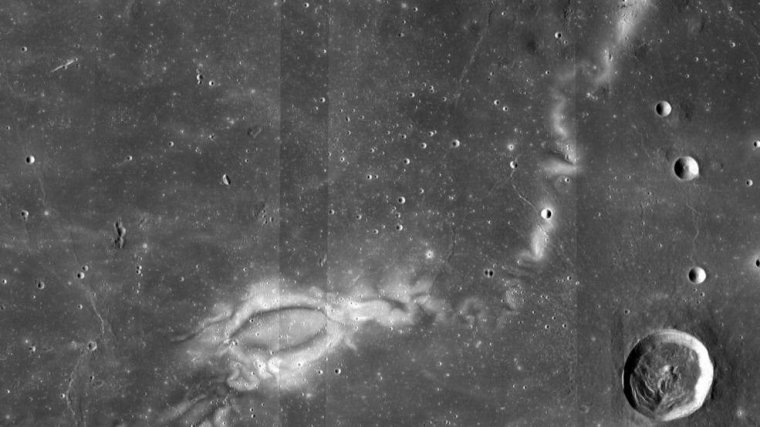| News / Space News |
NASA Research Gives New Insights into How the Moon Got 'Inked'
NASA | APRIL 30, 2016
A powerful combination of observations and computer simulations is giving new clues to how the moon got its mysterious "tattoos" -- swirling patterns of light and dark found at over a hundred locations across the lunar surface.

This is an image of the Reiner Gamma lunar swirl from NASA's Lunar Reconnaissance Orbiter. ![]()
These patterns, called 'lunar swirls,' appear almost painted on the surface of the moon. They are unique and their origin has remained a mystery since their discovery.
Lunar swirls can be tens of miles across and appear in groups or just as an isolated feature. Previous observations yielded two significant clues about their formation: First, they appear where ancient bits of magnetic field are embedded in the lunar crust (although not every "fossil" magnetic field on the moon has a lunar swirl).
Second, the bright areas in the swirls appear to be less weathered than their surroundings. The space environment is harsh; many things can cause material exposed to space to change chemically and darken over time, including impacts from microscopic meteorites and the effects of the solar wind – a million-mile-per-hour stream of electrically conducting gas blown from the surface of the sun.
Those clues led to three prominent theories about how the swirls formed. The swirls and the magnetic fields could both have formed from plumes of material ejected by comet impacts. Alternatively, perhaps when fine dust particles get lofted by micrometeorite impacts, an existing magnetic field over the swirls sorts them according to their susceptibility to magnetism, forming light and dark patterns with different compositions. Finally, since particles in the solar wind (electrons and ions) are electrically charged, they respond to magnetic forces. Perhaps the magnetic field shields the surface from weathering by the solar wind.
The new models reveal that the magnetic field can create a strong electric field when the solar wind attempts to flow through. It is this brawny electric potential of many hundreds of Volts that could deflect and slow particles in the solar wind. This would reduce the weathering from the solar wind, leaving brighter regions over protected areas.
YOU MAY ALSO LIKE




